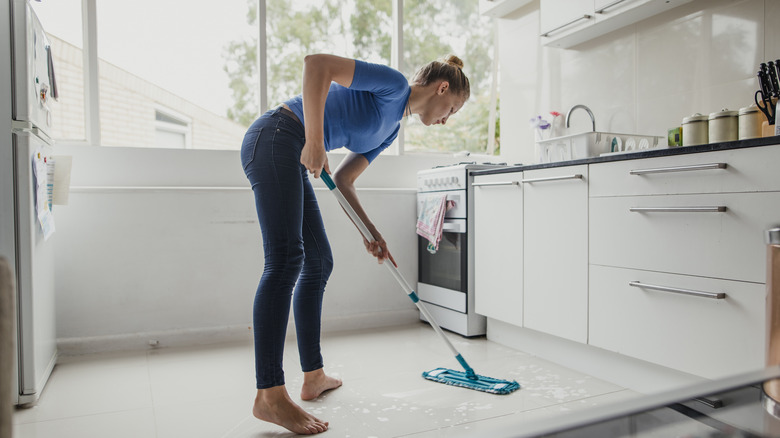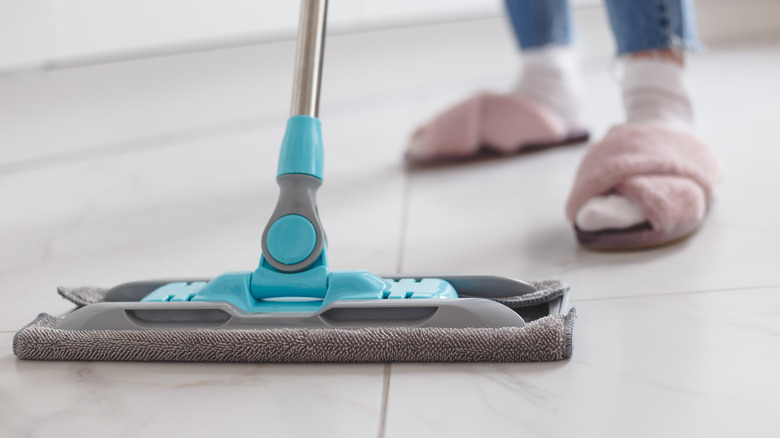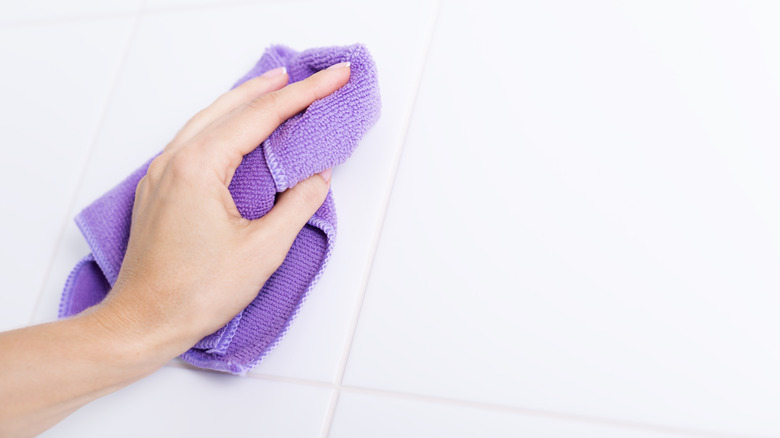The Simplest Way To Achieve Dazzling Porcelain Floors Without Any Chemicals
Porcelain floors are a welcome choice for any home since they offer a unique blend of sleek elegance and durability. Yet, though porcelain is a strong and resistant material, it doesn't require a harsh solvent to clean, particularly when it's glazed. Many reach for a store-bought, chemical-laden cleaning solution when cleaning porcelain floors. However, believe it or not, plain old water can be the most effective method to keep your floors in tip-top shape.
One thing that helps with cleanliness is porcelain's innate make-up. Its non-porous, glazed surface makes it naturally resistant to stains and dirt. Also, unlike wood or stone, it doesn't readily absorb spills or grime. Water, with its neutral pH and lack of harsh chemicals, simply lifts away dust, loose dirt, and even light spills without attacking the delicate surface. When cleaning porcelain tile, you always want to avoid harsh or abrasive products, so never use ammonia, bleach, or cleaners that contain high amounts of acid, as these can damage and erode the surface.
How water cleans porcelain
Water doesn't just clean surfaces. It can also tackle many everyday stains with surprising ease. Regular spills, muddy paw prints, and even light food splatters can be obliterated with a good mopping using only clean water, especially when cleaned right away. The key is to act quickly before the stain sets in.
Another benefit of using plain water is the lack of streak, especially when coupled with a microfiber mop. Harsh chemicals often leave behind unsightly streaks, compromising the view of your porcelain floors. Water, on the other hand, evaporates cleanly, leaving behind a streak-free, naturally gleaming surface. Then, when the sunlight catches your eye on the floor, you just see the porcelain tiles with no streaks in the frame. While water does wonders for the porcelain itself, it doesn't neglect the often-forgotten grout. Regular mopping with clean water helps prevent dirt and grime from accumulating in the grout lines, keeping those little crevices looking fresh and preventing mildew growth.
How to clean porcelain floors with water
One of the best perks of using water is that you can ditch the expensive cleaning products. Not only is it more cost-effective but it reduces the load of harmful chemicals in your home. First, you always want to sweep or vacuum to get all the dust and dirt removed before you mop. Microfiber mops are ideal since their gentle fibers effectively pick up dirt and grime without scratching.
When mopping, change your mop water frequently since dirty mop water redeposits dirt, negating your cleaning efforts. A mopping tip to keep your floors looking new is to avoid using hot water. It can set some stains and dull the porcelain's shine. Once you are finished mopping, dry the floor. For an extra touch of shine, buff your dry porcelain floor with a soft, dry microfiber cloth. This polishes the surface and brings out its natural luster.
Of course, there are times when water falls short. For stubborn stains, grease build-up, or heavily soiled floors, a mild soap detergent might be necessary. You can also mix a quarter cup of white vinegar into a gallon of water. For tougher stains, a baking soda and water paste can work wonders for the tiles themselves and the grout. For a deeper grout clean, mix water with baking soda to form a paste, and use a toothbrush or grout brush to clean to naturally dissolve grime and brighten the grout.


